Local computer scientist raises moral, philosophical questions on AI
Josh Saxe, Wichita-based computer scientist, discusses his work revolving around artificial intelligence at an artist talk at the Ulrich Museum of Art on June 15.
During his presentation, Wichita-based computer scientist Josh Saxe presented images, poems and even a snippet of a TV script — all generated by artificial intelligence (AI).
Saxe provided insight into AI’s capabilities as well as raised moral and philosophical questions on AI on June 15. He was one of three speakers related to the Ulrich Museum of Art’s exhibition, “In Event of Moon Disaster.”
Saxe works as a senior staff AI scientist at Meta Platforms, but he said his opinions are independent from his company. His talk occurred during a time of societal discourse on the use of AI.
Saxe explained that AI models are usually trained on massive datasets, then combined with a learning algorithm that runs on that data.
“What comes out is an opaque black box that even those of us who create these systems don’t fully understand,” Saxe said.
Saxe said ChatGPT provides text responses based on users’ prompts; it can also have lengthy conversations. Saxe presented various prompts and ChatGPT’s responses, such as a poem about falling in love in one’s seventies.
Saxe also asked ChatGPT to explain its writing choices, which it did.
“This just raises the question, ‘Is that intelligence in the machine? … Is that empathy, and can a machine have empathy?’” Saxe said. “And if so, what’s the moral status that we should assign to ChatGPT?”
Saxe presented a ChatGPT-generated episode script, and while he acknowledged that Hollywood writers are on strike, he said the tool could potentially help writers. The Writers Guild of America is pushing for bans on using AI to write or rewrite scripts.
“There’s a real possibility that you could use AI at least to accelerate the writing process,” Saxe said.
Saxe said to test ChatGPT’s intelligence, he input a vignette related to theory of mind, or the ability to infer others’ and one’s own mental states. He asked the AI to gauge one character’s thoughts and emotions. According to Saxe, ChatGPT generated an appropriate response.
“So does AI have a model of human consciousness and human emotion and our particular cultural norms?” Saxe asked. “This would suggest, yes.”
Saxe said a Stanford professor’s also suggested AI has a theory of mind.
Saxe also showcased two generated artworks and a magazine cover generated by Midjourney, an AI system that creates images from written prompts. Saxe raised the question if AI is creative.
“I think that question is going to accentuate for our society as AI becomes more and more capable of taking up the space that we used to imagine this uniquely human in creating imagery like this,” Saxe said.
Saxe said AI systems can aid in scientific discoveries. He highlighted how AlphaFold, a Google-created system, can predict three-dimensional structures of proteins, which he said has been a “very long-standing problem in structural biology” and is important to discovering a curing cancer.
“(It) made a dramatic leap in our ability to solve this problem,” Saxe said. “I think that if cancer is cured, my guess (is) – I’m not a biologist, but just from papers I read on AI – it seems likely that AI will have played a part.”
Saxe said regulating AI will be “essential” as it develops. While uncertain about the extent, he said one obvious guardrail is AI models shouldn’t be trained on copyrighted data.
“It feels really, clearly wrong for me to go create a bunch of derivative works on art that a system like Midjourney was trained on, and then sell them on Etsy and make a bunch of money and not compensate the original artists,” Saxe said.
Saxe said that AI-generated images will become harder to distinguish from actual images.
“We’ve imagined camera photos … as a source of truth about real-world events. I think that’s going to change,” Saxe said. “There’s some efforts going out in the industry to have some metadata attached to digital artifacts that actually speaks to its provenance, so we know if it’s generated or not.”
Saxe also shared a ChatGPT-generated response that revealed gender bias, and while he said its creator company tried to mitigate this, ChatGPT has biases and can potentially contribute to misinformation.
“We’re interacting with an agent (ChatGPT) that has opinions, and those opinions are sometimes subtle and hidden, and sometimes more explicit,” Saxe said. “Billions of people can use these technologies. There are implications to that.”
An audience member asked about AI replacing jobs in the tech industries. Saxe said that while some AI tools can generate code and accelerate programming, most jobs have other tasks that cannot be automated.
“But I do think we’ll see AI is increasingly interleaves into the economy, and probably raising labor productivity,” Saxe said. “And the question is, ‘Is this the same old dynamic of creative destruction that we see in capitalism? Or is it capitalism on steroids?’”
To learn more about Saxe’s talk, visit the live stream on the Ulrich Museum’s YouTube.
The third scholar talk related to “In Event of Moon Disaster” is slated for 5:30 p.m. on July 13 in the Ulrich Museum and via livestream. More information can be found on the museum’s website.

Courtney Brown was one of the news editors for The Sunflower during the 2023-2024 year. She previously worked as a reporter and assistant news editor....



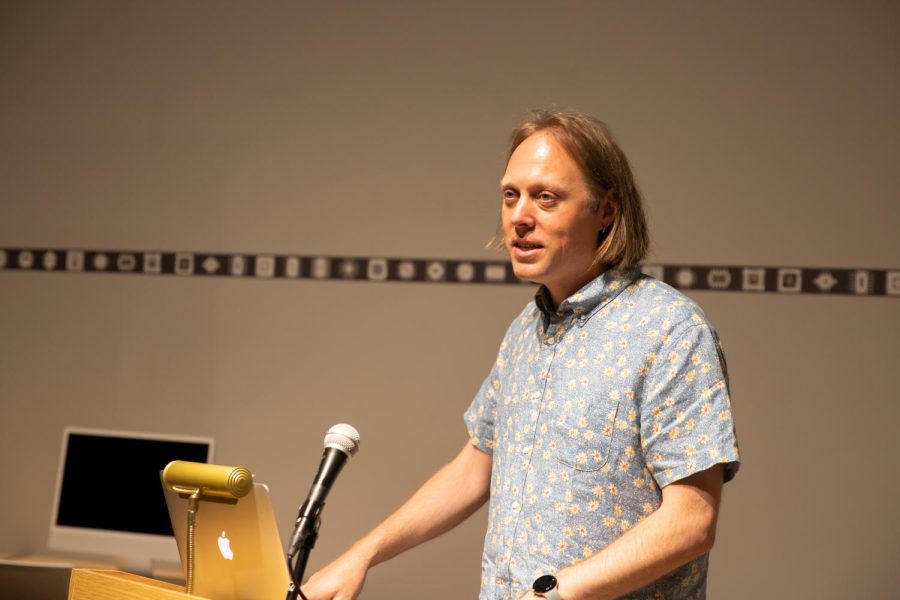
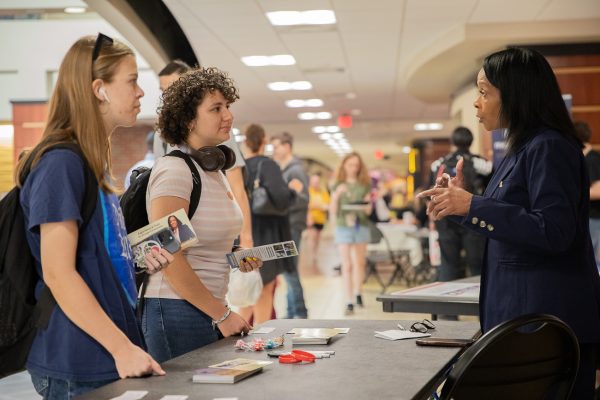



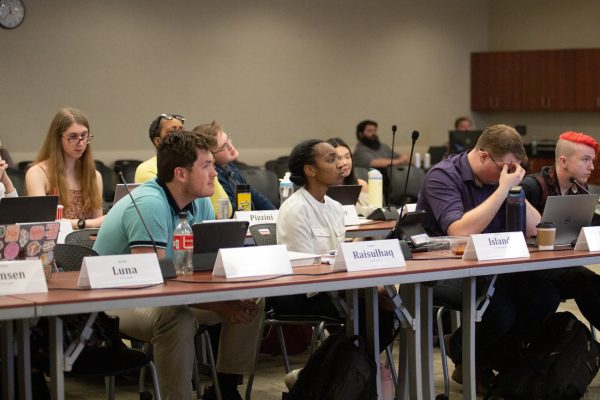
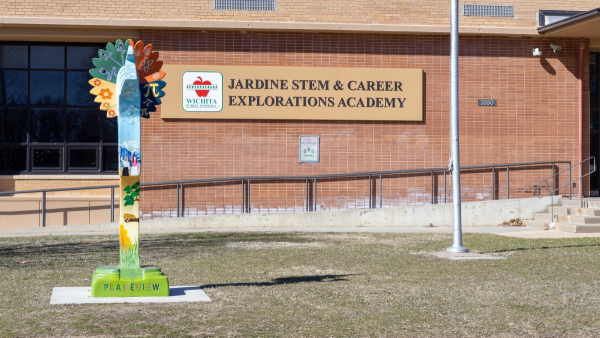
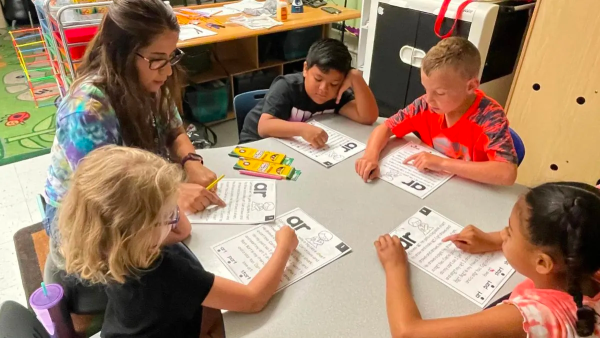

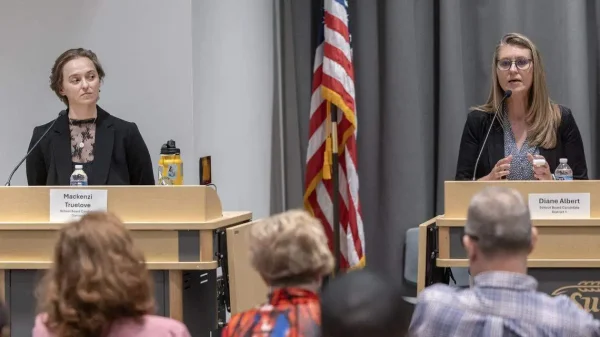

Grant Castillou • Jun 20, 2023 at 2:19 pm
It’s becoming clear that with all the brain and consciousness theories out there, the proof will be in the pudding. By this I mean, can any particular theory be used to create a human adult level conscious machine. My bet is on the late Gerald Edelman’s Extended Theory of Neuronal Group Selection. The lead group in robotics based on this theory is the Neurorobotics Lab at UC at Irvine. Dr. Edelman distinguished between primary consciousness, which came first in evolution, and that humans share with other conscious animals, and higher order consciousness, which came to only humans with the acquisition of language. A machine with primary consciousness will probably have to come first.
What I find special about the TNGS is the Darwin series of automata created at the Neurosciences Institute by Dr. Edelman and his colleagues in the 1990’s and 2000’s. These machines perform in the real world, not in a restricted simulated world, and display convincing physical behavior indicative of higher psychological functions necessary for consciousness, such as perceptual categorization, memory, and learning. They are based on realistic models of the parts of the biological brain that the theory claims subserve these functions. The extended TNGS allows for the emergence of consciousness based only on further evolutionary development of the brain areas responsible for these functions, in a parsimonious way. No other research I’ve encountered is anywhere near as convincing.
I post because on almost every video and article about the brain and consciousness that I encounter, the attitude seems to be that we still know next to nothing about how the brain and consciousness work; that there’s lots of data but no unifying theory. I believe the extended TNGS is that theory. My motivation is to keep that theory in front of the public. And obviously, I consider it the route to a truly conscious machine, primary and higher-order.
My advice to people who want to create a conscious machine is to seriously ground themselves in the extended TNGS and the Darwin automata first, and proceed from there, by applying to Jeff Krichmar’s lab at UC Irvine, possibly. Dr. Edelman’s roadmap to a conscious machine is linked at Jeff Krichmar’s site.